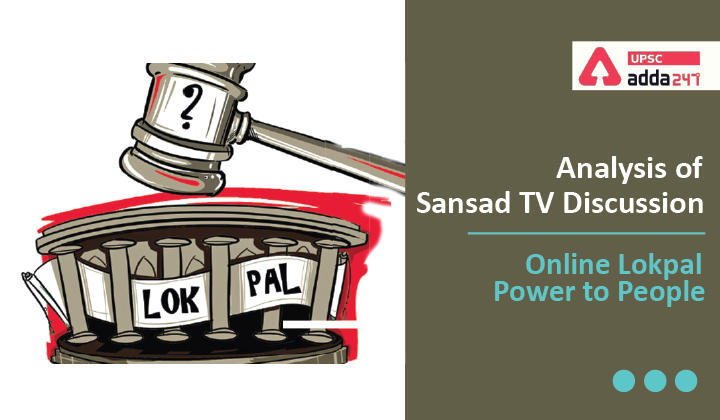Table of Contents
Context
An online system that enables people to file corruption complaints with the Lokpal was inaugurated in New Delhi recently by the anti-graft ombudsman Chief Justice Pinaki Chandra Ghose.
Background
- Lokpal of India has been established under the Lokpal and Lokayuktas Act, 2013 to inquire and investigate allegations of corruption against public functionaries falling within the scope and ambit of this Act.
- The main aim of Lokpal is to free the country from the malady of corruption and to build a strong and corruption-free India
- At present complaints sent by post, e-mail or delivered by hand are entertained by the Lokpal of India.
Important features of this digital platform
- Convenience to complainants for filing complaints online from anywhere anytime.
- Information to the complainant about action on the complaint at every stage through e-mails and SMS.
- Facility to the complainant to ascertain the status of complaint at any time.
- The identity of the complaint is kept confidential.
- The CVC, CBI and other inquiry agencies can upload their reports directly on the ‘LokpalOnline’ platform.
- Reminders to inquiry agencies through e-mails and SMS
- Generation of analytical reports as per requirement.
About Lokpal
- It is an anti-corruption body or ombudsman, responsible for looking into corruption complaints at the national level.
- The Lokpal movement in India was spearheaded by activist Anna Hazare, with his Jan Lokpal movement in 2011.
- The Lokpal and Lokayuktas Act was passed by the parliament in 2013.
- The Lokpal and Lokayuktas Act 2013 came into existence on January 1, 2014.
- It extends to the whole of India and applies to “public servants” as defined in the Act, which includes the incumbent prime minister and Union ministers. Past public servants can also be investigated.
- In 2019, retired Supreme Court judge Pinaki Chandra Ghose was appointed as the first Lokpal of India.
The procedure of Selection of Members
- Under the 2013 Act, the Lokpal should consist of a chairperson and such number of members, not exceeding eight, of whom 50% should be judicial members.
- The selection procedure for these posts is the same as that for the chairperson.
- A search committee will prepare a panel of candidates, a selection committee will recommend names from among this panel, and the President will appoint these as members.
- The Act states that not less than 50% of the members of the Lokpal should be from among persons belonging to the SCs, the STs, OBCs, minorities and women.
- The same rules apply to members of the search committee. Salaries, allowances and service conditions of the Lokpal chairperson will be the same as those for the Chief Justice of India; those for other members will be the same as those for a judge of the Supreme Court.
What is the mandate of Lokayuktas mentioned in the Lokpal Act?
- These are the state equivalents of the central Lokpal.
- Every State shall establish a body to be known as the Lokayukta for the State, if not so established, constituted or appointed, by a law made by the State Legislature, to deal with complaints relating to corruption against certain public functionaries, within a period of one year from the date of commencement of this Act(Section 63 of the Lokpal and Lokayuktas Act).
- This means the establishment of the institution of the Lokayukta including any appointment therein falls within the domain of the states.
Success Rate of Lokayukta Institution
- A very large part of the corruption we talk about involves state governments, their agencies and bodies of the local self-government, which would fall entirely outside the purview of the central Lokpal — in varying degrees (depending upon the actual state legislation), these come under the state Lokayuktas.
- A fully empowered Lokayukta in Karnataka, enjoying “terms of service” equivalent to the chief justice of India, has hardly failed to contain corruption in that state.
- There were instances when the institution there itself came under a serious cloud, and when the lokayukta himself had to resign following a controversy involving his own son.
Conclusion
- Lokpal is still growing and progressing. Total transparency, accountability, convenience and efficiency in functioning is the hallmark of Lokpal, for which the ultimate beneficiary is the common man. With the new initiative, steps should be taken to create awareness about the online Lokpal Complaint portal even in rural India, so that anyone can file a complaint sitting at home.



 TSPSC Group 1 Question Paper 2024, Downl...
TSPSC Group 1 Question Paper 2024, Downl...
 TSPSC Group 1 Answer key 2024 Out, Downl...
TSPSC Group 1 Answer key 2024 Out, Downl...
 UPSC Prelims 2024 Question Paper, Downlo...
UPSC Prelims 2024 Question Paper, Downlo...
